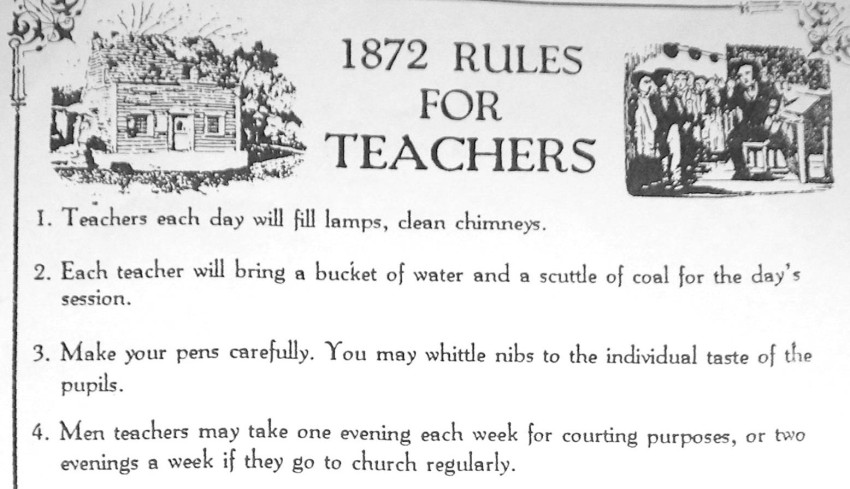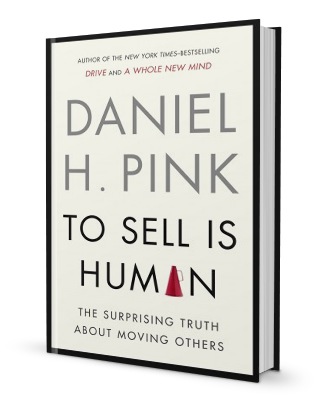by Kelly Riggs
 I participated in a world-class TwitterChat yesterday.
I participated in a world-class TwitterChat yesterday.
30 crazy-good sales professionals (#SalesTribe) joined together to tackle some current sales topics. In the middle of the chaos (have you done a TwitterChat?), the subject of “old school selling” was raised.
There has, in fact, been a lot of commentary recently regarding the “death” of the salesperson and “old-school selling.” It seems there are those that think we don’t really need salespeople anymore now that we have the Internet and social media and all of these sophisticated digital tools.
Instead, just get yourself a website and a Facebook page, a Twitter account, a LinkedIn profile, a YouTube channel, a blog, and an email newsletter and you can say “see ya later” to having anything whatsoever to do with…selling.
Just hang out your electronic shingle and wait for people to stampede your company, begging for your products and services!
Which is good news, because many (sales)people today are looking for any possible way to avoid even the appearance of selling.
And it’s even made life easier for a first-time business seller to find a buyer for their business. It has allowed them to pursue less traditional options that they wouldn’t have known about before. Like, for example, creating a business note to help with the financing to assist in the sale to a buyer. Then if they are setting up a new business and find they need quick cash they simply go to sites like https://www.amerinotexchange.com/sell-business-note/ and sell their note on to get the required revenue. This just goes to show how much the easier new way of selling is for both experienced and first-time sellers.
And don’t you dare accuse these “New School” players of being in sales. Oh, no. These days it’s fashionable to be an Account Manager or an Account Executive or a Client Representative. If absolutely necessary, you can call them Business Development Managers or Territory Managers or Customer Relations Managers.
Anything except the “S” word.
More recently, the New School crowd has even decided that what they do isn’t even really selling. God forbid. Hide the women and children! Oh, no, my friend, what these folks do is “manage the client funnel” and “provide client support.”
Why? Because “old school” salespeople are aggressive, pushy, conniving, greedy, self-centered, egotistical, money-hungry, and otherwise completely untrustworthy. Which, of course (wink, wink), changes completely when you change the title on your business card, right?
Yes, indeed, “old school” selling is completely out of date.
I have to laugh. Obviously, there is WAY more technology today than twenty years ago. And there is no question that digital tools and social media have irreversibly changed the dynamic between the customer and the salesperson.
On the other hand, all of these tools have also opened up competition like never before.
The truth is that the barrier to entry in almost any industry is typically very low. Competitive response is lightning quick. Market innovation arrives each day right along with the sunrise.
To compound the problem, the deluge of information available to the customer often makes decision-making more difficult, not easier. Many different products, many different applications, varying levels of implementation and support, multiple price structures, different platforms, and much, much more.
If you doubt me, try to figure out on your own which one of these Sales Automation platforms is right for your business:
Salesforce.com
Nimble
Contactually
Hubspot
Pipeliner CRM
Insightly
Sage
Base
Sugar CRM
Marketo
Microsoft Dynamics
Zoho
Highrise
(And about 100 others)
Yes, I know. They are not all the same. Some do some things and others do other things (Dynamics, for example, is also Microsoft’s ERP solution), but in most cases they overlap in large areas.
So, which one will it be?
Unless your an expert in the field, all you can expect your research to do for you is create the need for an expert…
A salesperson.
So, competition in every market is fierce, and information overload is a very real challenge for clients to overcome. What all of this means is that, especially in the B2B environment, a salesperson is not only critical, but maybe more necessary than ever before.
 In his recent book, To Sell is Human, author Daniel Pink points out that there are vast numbers of additional workers spending considerable parts of their workday, as he says, “selling in a broader sense-persuading, influencing, and convincing others.” To the tune of about 15 million Americans who earn their living in…uh…persuasion management (Note: New School Approved. Deemed appropriate as a suitable replacement for ss….ss-sss-s…)
In his recent book, To Sell is Human, author Daniel Pink points out that there are vast numbers of additional workers spending considerable parts of their workday, as he says, “selling in a broader sense-persuading, influencing, and convincing others.” To the tune of about 15 million Americans who earn their living in…uh…persuasion management (Note: New School Approved. Deemed appropriate as a suitable replacement for ss….ss-sss-s…)
More importantly, social media and the new digital frontier has, Pink claims, created a groundswell of “artisans, non-employer businesses, free agents, [and] micro-entrepreneurs” who are “selling all the time.”
Shut UP!
From my perspective, selling is selling. The role of the salesperson – with or without tools and technology – has always been to inform and educate the customer, build a relationship of trust, consult on a solution, and then support both customer and solution as needed.
The game is the same, but the equipment is different.
That is why the death of “old-school” selling is greatly exaggerated in my view. More choices requires a more educated salesperson. An accelerated sales process requires a more responsive salesperson. Increasing technological complexity requires a salesperson with the skills to make sense of the chaos and identify the most elegant – and most cost effective – solution.
Here are three things about “old school” selling that I’m sure are just as important to my “New School” compadres as they are to me:
Old-school selling is about developing and nurturing relationships. A relationship implies trust and dialogue and reciprocity. And developing a relationship – for most people – requires personal contact.
One thing about people is that most would rather make a decision – to purchase, to change, to take a risk – with the sense that they have the right information and are using good rationale. They want to feel confident in their decisions and be able to justify them. A trusting relationship with a skilled professional salesperson fulfills those needs.
Orders without that relationship are merely transactions. And transactional business is typically built on price and price alone. See the problem?
A real relationship with a client means the client calls you when they have a problem. The client involves you early in the buying process, not just when they send out an RFP. The client depends on you for your expertise to solve critical problems.
The client trusts you, because you’ve earned that trust.
Action Steps: Get interested in your clients. Understand their businesses. Educate yourself on their business issues and go-to-market strategies. Develop your credibility with innovative ideas and additional applications that save them money and solve nagging problems. Most importantly, become a resource, create value, and give before you ask – that’s the way you earn trust.
Old-school selling is about creating a series of productive conversations. Sure, the sequence and context of those conversations may have changed in today’s sales environment since customers are far more educated than in the past, but the value of those conversations is still the same.
Quite often, customers need to know things that aren’t available on a corporate website or in a PDF spec sheet. Productive dialogue – driven by insightful questions – produces valuable information that allows a salesperson to create the right solution. A solution that best fits that customer’s specific needs.
Unfortunately, dialogue has been replaced in many sales calls with the disaster known as PowerPoint.
Hey, there is nothing wrong with the tool; it’s the person using it that’s killing customers. I won’t even think about listing all the ways PowerPoint is abused in sales presentations, but one of those ways is that it often creates a one-sided, listen-while-I-tell-you-how-awesome-we-are, dull, boring monologue.
And a monologue is definitely not a conversation.
I guess that’s why conversations are old school. You actually have to ask questions and listen to the answers, and engage the customer.
A “Client Representative” would prefer if you just sent them an email.
Action Steps: Learn the value of asking questions. Listen carefully to your customer and forget about your PowerPoint presentation for a while. Try to gain an understanding of what specific and unique challenges may exist before you fire off brochures and YouTube videos. For extra credit, don’t even sell anything in your next sales call – just ask questions. You might be surprised. You might also want to consider reaching out to a digital marketing specialist such as Conversant Media. Marketing experts can help you to use analytics and other digital marketing information to create a clear picture of the wants, needs, and desires of your customer. Above all, understanding what your customer is looking for can help you to adapt and develop your products and services to meet their needs.
No, not the automated kind of follow-up. Real, personalized follow-up. The kind of follow-up that ensures the installation went as planned. The kind that returns phone calls when there is a problem.
Again, what you see here is a connection to a human being. Not the “please-stay-on-the-line-because-we-really-value-your-business” kind of follow-up, but the kind that delivers on all the promises that have been made – and then some.
That’s how us old-school guys do it. We don’t plug a name into our marketing software and let the computer automatically send out birthday cards and call it follow-up.
Funny thing is, I’ve met very few people of ANY age that don’t rave over personal attention. I’ve found that when people spend their money, the last thing they want to do is get put on hold, or submit a service ticket, or send a dozen emails trying to get someone to help them.
They just want a salesperson to take care of them.
Action Steps: Get personal in your follow-up. Write real notes. Make phone calls. Talk to people and make sure your product or service implementation is going as expected. If not, handle it personally. Don’t blame me if your customer smiles and thanks you for the extra effort.
I’m sure that there are buyers out there who never want to see a salesperson. They are more than happy to do all of their own research, make their decisions without intervention, and make the entire buying process about price negotiation.
But I’ve know customers like that throughout my career. Today, technology just makes it a little easier for them.
Yes, indeed. I’m old school.
Oh, and by the way, we old-school salespeople typically use all of the new social selling tools that are available and take advantage of the advances in technology, too. Most of us actually do understand the value of sales automation and productivity tools.
We just haven’t forgotten that people buy from people.
Kelly Riggs is a business performance coach and founder of the Business LockerRoom. A former national Salesperson of the Year and serial entrepreneur, Kelly is a recognized thought leader in the areas of sales, management leadership, and strategic planning. He serves clients ranging from small, privately held companies to Fortune 500 firms. Kelly has written two books: “1-on-1 Management™: What Every Great Manager Knows That You Don’t” and “Quit Whining and Start SELLING! A Step-by-Step Guide to a Hall of Fame Career in Sales.”